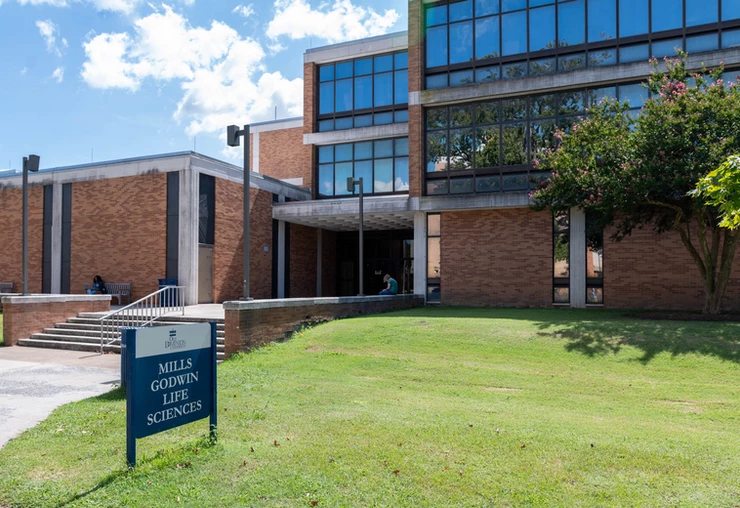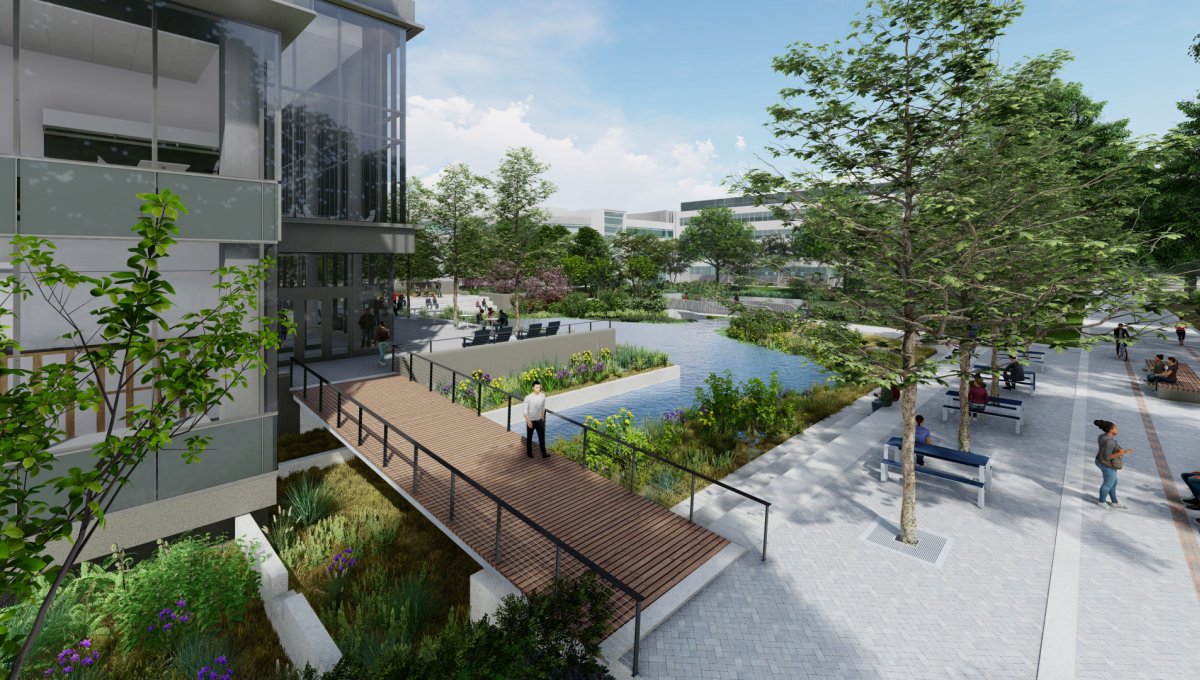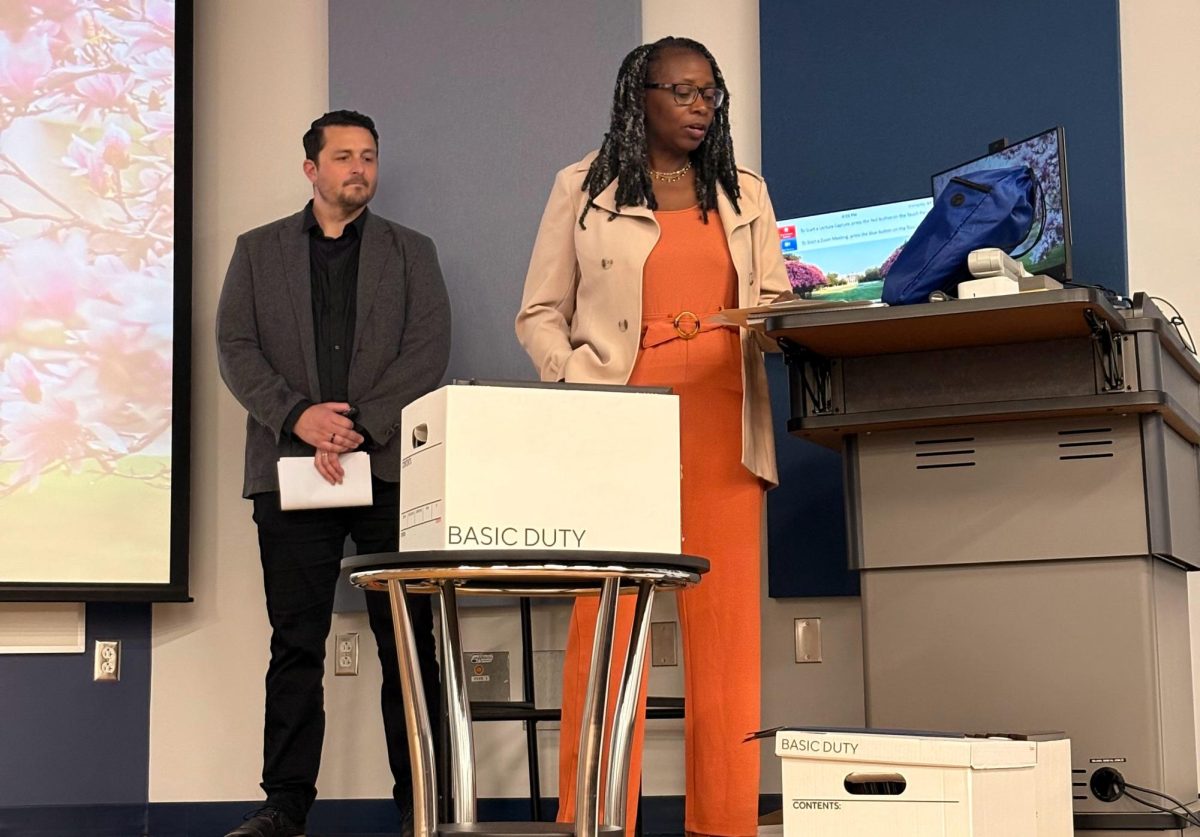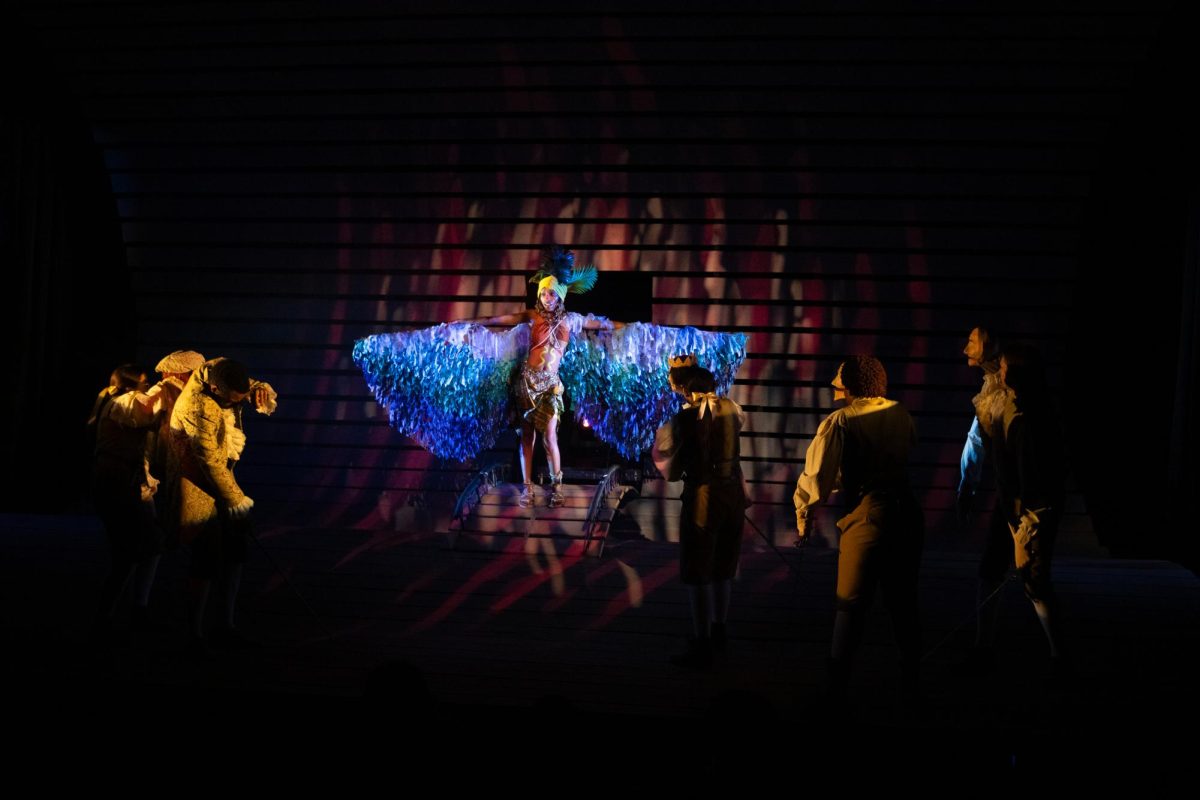Removal of Robert E. Lee Statue Inspires Conversation Towards the Mills Godwin Building
December 20, 2021
Originally published September 13, 2021.
Amidst a cheering crowd, the 13-ton, 21-foot-tall bronze statue of Confederate Gen. Robert E. Lee was removed from its pedestal in Richmond on Wednesday, according to the Associated Press. Installed in 1890, the statue stood in the middle of a state-owned traffic circle, previously accompanied by four other massive Confederate statues that had been removed last summer.
“Even though Robert E. Lee was an inanimate object… of stone and granite, stone and bronze, it was a weight taken off the city’s shoulders today—particularly the shoulders of Black and brown people, who for over 100 years have had to toil under the shadow of one of the largest, tallest Confederate statues in the country,” Richmond Mayor Levar Stoney told TIME magazine.
While a burden has been lifted from the shoulders of those in Richmond, there are those at ODU who still feel a weight here on campus. In Feb. of this year, an opinion editorial was published by ODU history major Noah Fort. Published in The Virginian-Pilot and recognized by ODU, Fort supplied a call to action advocating for changing the name of the Mills Godwin Life Sciences Building (MGB).
As Fort wrote, Mills Edwin Godwin Jr., for whom the building is named after, was a former student at the Norfolk Division of the College of William & Mary and two term governor of Virginia, instrumental in granting ODU funding for several projects. Godwin was also a legislator involved in advocating Massive Resistance laws to obstruct the implementation of federal court orders deeming segregation of schools illegal. Like the Lee statue, buildings named after people share similar historical significance.

“Statues, buildings, whatever they may be, they’re all about honoring that person’s legacy.” Fort weighed in during an interview, “And most of these people’s legacy—like Mills Godwin, who was a white segregationist, and Robert E. Lee who advocated for slavery and was a head of the Confederacy— are not something we should honor.”
“Integration, however slight, anywhere in Virginia would be a cancer eating at the very life blood of our public schools system.” Godwin is quoted as saying in Fort’s op-ed.
Fort reported that the university, under former President John Broderick in response to Fort’s call to action, formed a formal committee to review the facts about Godwin and consider if the name should be stripped from the building.
However, this was not the first time a name change for the Godwin building was considered by members of the ODU student body or its organizations. Isaiah Lucas, who served as the President for the Student Government Association (SGA) during the 88th-89th session, was
glad to see Fort’s op-ed published because the issue was on the mind of the SGA under his presidency as well.
“When we were having these conversations that was before this big movement— before all these statues were removed, all these buildings were renamed,” Lucas recalled via phone interview commenting how he and his team at the SGA had formed an ad-hoc committee to research and draft legislation on the issue, “COVID-19 is the reason why we didn’t see it through, but we started that conversation in 2019.”
The SGA during Lucas’ presidency had formally met with former President Brodrick as well, along with other university officials to present their concerns and findings. The SGA legislation never made it to the floor due to the impact of the COVID-19 pandemic.
Six months after Fort’s op-ed, and a year and six months since the COVID-19 pandemic was declared— halting the work of Lucas and his team— Godwin’s name remains on the Life Sciences building as other symbols of a more obstructed past fall around it.
The university has seen a change in presidents since Fort’s op-ed and Lucas’ team, and it was possible that Broderick’s name change committee, as well as the work of the SGA, was lost in the mix—wrapped up in legislation similar to the Lee statue in Richmond which was ordered by Northam to be removed last summer. The removal of the Lee statue was slowed down by a lawsuit, as well as a Virginia law that protected memorials to war veterans, a law only recently overturned by the Va. Supreme Court.
“At this particular [time], the board has established a committee that will look at developing guidelines around name changes as it relates to buildings,” President Hemphill commented in an open forum held on campus Thursday when asked where the university was in the process of considering the name change, “I have shared with everyone that what I need is time to get here, get on the ground and spend time conducting my own level of research.”
According to the committee minutes from the Jul. 13 Board of Visitors meeting, the Naming Subcommittee reported that they had held their first meeting to discuss goals and plans for a draft of bylaws. According to the Aug. 9 minutes, the committee had not met since the last meeting but they “plan to meet soon.” The next meeting of the Board of Visitors is scheduled for Sep. 14.
“It’s something that we take very seriously,” Hemphill continued, “when we think about our history and what our history represents, I assure you that we will do our due diligence and ensure that it’s done properly.”
“Former Governor Godwin’s core beliefs represent the polar opposite of Old Dominion’s core values,” Fort urged, referencing ODU’s commitment to diversity, integrity and accountability, “We’re a minority serving institute now, so most of what [Godwin] did is against what minorities like myself would support.”
Who would Fort recommend the building’s namesake be if it was his decision?
“I believe the building should be named after people like Cecelia Tucker, because she is one of the many people who have paved the way for students like myself.” Fort says, “[Tucker] participated in sit-ins when she was younger in the Richmond area, and she’s been here—at ODU— for a third of her career participating and helping in community engagement.”
This is the most compelling factor, in Fort’s opinion, for Tucker to be the namesake instead, “[It’s] a big part of diversity—community engagement.”

Lucas described community engagement as the core motivation behind the SGA’s investigation on the name change as well, “Taking justice and turning it into action— It’s not performative. It’s rooted in unitality, it’s rooted in commonality, it’s rooted in community work.”
Lucas reflected on how long the Godwin building has held its name and the importance of openly discussing the names controversy, “When we think of ODU as being a diverse space and an inclusive space, a space of equality, a space of equity and a space of justice—that conversation has to be had because we have to live up to the standards that we set.”
“As we move through this year, I’m going to use this year to get a real understanding of what [the] issues are, what the background may be and not rush in to make a decision—an uninformed decision as the new president.” Hemphill vowed, stating, however, “I need to know the background information.”
“At the end of the day, starting the conversation is as important as seeing your idea come to fruition,” Lucas shared, “I’m proud of our Monarch community because one thing I love about ODU is that we stand together through success and adversity, and we stand together through difficult conversations.”









